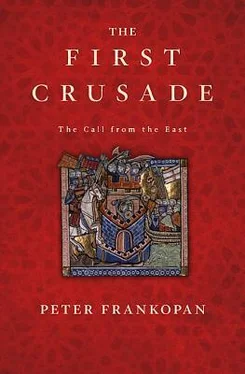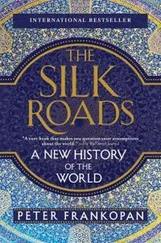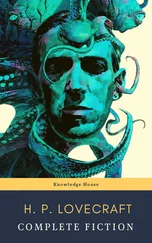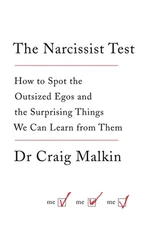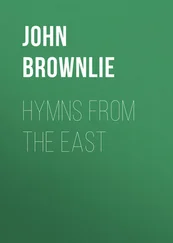The image of the historian crouching over a script, working late into the night, is an emotive and charming one; but here it is a literary device, as is the author’s crafted apology about her mistakes, a standard disclaimer used by the writers from classical antiquity whose works provide a template for the Alexiad . In fact, Anna Komnene’s work is extremely well researched, drawing on an impressive archive of letters, official documents, campaign notes, family histories and other written material. 26
While some problems of the Alexiad ’s chronology have been identified by scholars, a great many have not. This in turn has led to major errors in the commonly accepted sequence of events that took place in the reign of Alexios I Komnenos. The most significant of these concerns the state of Asia Minor on the eve of the Crusade. The picture presented by Anna Komnene’s account is misleading; in fact, careful re-evaluation of the Alexiad – taken together with other source material – reveals startling conclusions, sharply at odds with longestablished views. In the past, it has been assumed that the Byzantine emperor sought military assistance from the west to undertake an ambitious and opportunistic reconquest of Asia Minor from a position of strength. The reality was very different. His call for help was a desperate last roll of the dice for a ruler whose regime and empire was teetering on the brink of collapse.
The fact that the situation in Asia Minor on the eve of the First Crusade has not been properly understood in the past is highly significant. The knights were heading east to take on the Turks, a formidable enemy, who had brought the Byzantine Empire to its knees. Originally part of the Oguzz tribal confederation which Arab historians located to the east of the Caspian Sea, the Turks were a steppe people whose military prowess gave them increasing influence over the caliphate in Baghdad as it fragmented in the later tenth century. From the 1030s, not long after their adoption of Islam, the Turks were the dominant force in the region, less than a generation later becoming masters of Baghdad itself after their leader, Tughril Beg, was appointed sultan with full executive powers by the caliph.
Their progress westwards was relentless. Raids soon began on the Caucasus and Asia Minor, causing disruption and provoking panic among the local population. The Turks could move quickly and seemingly without trace on squat central Asian horses whose strength and stamina made them well suited for the mountainous terrain and steep ravines of this region; they were ‘swift as eagles, with hooves as solid as rock’, according to one source. The Turks reportedly attacked those they came across like wolves devouring their food. 27
By the time of Urban’s speech at Clermont, the Turks had demolished the provincial and military administration of Anatolia that had stood intact for centuries and captured some of the most important towns of early Christianity: places like Ephesus, home of St John the Evangelist, Nicaea, the location of the famous early church council, and Antioch, the original see of St Peter himself, were all lost to the Turks in the years before the Crusade. Little wonder, then, that the Pope pleaded for the salvation of the church in the east in his speeches and letters in the mid-1090s.
The context of the First Crusade is to be found not in the foothills of Clermont or in the Vatican, but in Asia Minor and in Constantinople. For too long, the narrative of the Crusade has been dominated by western voices. But the knights who set out in high expectation in 1096 were reacting to a developing crisis on the other side of the Mediterranean. Military collapse, civil war and attempted coups had brought the Byzantine Empire to the edge. It was to the west that Alexios I Komnenos was forced to turn, and his appeal to Pope Urban II became the catalyst for all that followed.
The First Crusade defined the Middle Ages. It established a common identity for the knighthood of Europe, pinned firmly on the Christian faith. It influenced behaviour, with piety and service emerging as highly prized personal qualities, extolled in verse, prose, song and art. It idealised the concept of the devout knight, fighting for God. It established the Pope as a leader not just of spiritual significance but of political importance. It gave common purpose to western principalities, creating a framework where the defence of the church was not just desirable but an obligation. Out of the First Crusade grew the ideas and structures which shaped Europe until the Reformation.
Ironically, the Crusade was itself the product of discord and disunity, for Europe was riven by turmoil and crisis in the second half of the eleventh century. This was a time of conquest and upheaval across the continent. England was under Norman occupation, having barely managed to resist persistent attacks from Scandinavia. Apulia, Calabria and Sicily were also in the process of being transformed by immigrants from Normandy, first mercenaries and then opportunists, who were drawn south by the rich financial rewards on offer. Spain was in transition, its Muslim occupiers being evicted town by town after more than three centuries of control over the peninsula. Germany too was in upheaval, with major uprisings breaking out against the crown on a regular basis. The Byzantine Empire, meanwhile, was under chronic pressure, with its northern, eastern and western frontiers threatened, assaulted and overrun by increasingly aggressive neighbours.
The eleventh century was also a time of violent dispute between the papacy and the leading magnates of Europe which saw rulers being dramatically excommunicated, then sometimes rehabilitated only to be thrown out of communion once again. Almost all the main figures of this period – Henry IV of Germany, Philip I of France, King Harold of England, the Byzantine emperor Alexios I Komnenos and the Norman duke Robert Guiscard – were excommunicated at least once by the papacy as part of its attempts to assert authority over the secular world.
So great were the divisions even within the church that in the late eleventh century there were rival popes, each claiming to be the legitimate heir to the throne of St Peter and backed up by rival clergies claiming to be the legitimate electing body. Then there was the Byzantine church, which was sharply at odds with the practices and teachings that were standard in the west, and in a state of schism with the papacy. Yet the most poisonous and sustained of the arguments engulfing Europe in this period threatened the viability of the church as a whole: a major fallout had devastated relations between Pope Gregory VII and the most powerful man in Europe, Henry IV of Germany. Henry’s predecessors had established control over northern Italy and made themselves emperors of Rome in the 960s; as a result they paid close and careful attention to the papacy, retaining a right to be involved in papal elections. Relations between Gregory VII and Henry IV started promisingly enough after the appointment in April 1073 of Gregory, ‘a religious man, well versed in both branches [sacred and secular] of knowledge, a most pre-eminent lover of equity and righteousness, strong in adversity ... honourable, modest, sober, chaste, hospitable’. 1The Pope took heart from messages sent by the emperor after his election. Henry, he wrote to one supporter, ‘has sent us words full of pleasantness and obedience, and such as we remember that neither he nor his predecessors ever sent to Roman pontiffs’. 2
It did not take long, though, for relations to degenerate. Even before becoming pope, Gregory had been a pragmatist with strong views about reforming the church and centralising Rome’s power more effectively. Of particular concern was the issue of appointments to high offices in the church, many of which were being sold in what amounted to little better than organised corruption. Some senior positions brought lucrative stipends as well as influence and authority, making them a highly desirable sinecure – useful rewards to be handed out by powerful rulers. 3
Читать дальше
